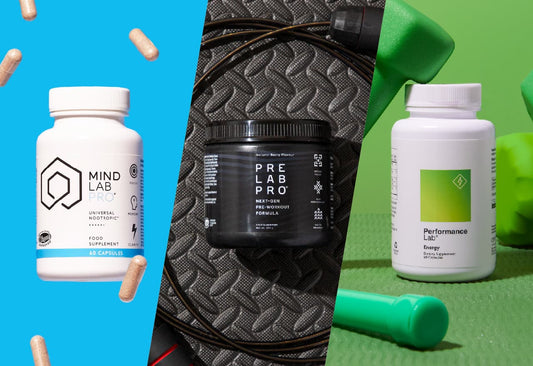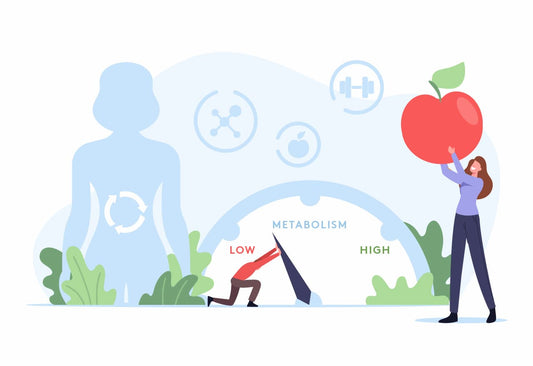Women (and the fitness world) seem to be obsessed with getting lean, losing weight, and burning fat, but when it comes to the opposite, resources for women on gaining weight and boosting muscle are hard to come by.
Men have the upper hand where muscle growth is concerned because of genetics and hormones. High testosterone levels are gold for building muscle and shedding fat, but because women have relatively low amounts of testosterone, is it even possible to gain an appreciable amount of muscle?
Many women fear that gaining muscle will make them look bulky, but it’s the furthest thing from the truth. Female testosterone levels are not high enough to cause massive muscle growth, but putting on lean mass is perhaps one of the best things you can do for your overall health.
Building lean muscle increases functional strength, metabolic rate, glucose and insulin sensitivity, and several other markers of health and well-being.
So, if you’re looking to add curves to all the right places, we’re breaking down the deal with muscle building for women. We’re giving you our best tips for boosting muscle growth and getting that dream body you’ve always wanted.
The Deal With Women And Muscle Growth
There’s a myth that’s floated around for ages that women can’t build muscle as effectively as men, and if they do, it’s going to make them bulky. You’ll hear it everywhere and it may just be one of the reasons that a lot of women tend to shy away from lifting.
Cardio consistently ranks top with women because it’s the easiest way to lose fat and tone your body—but au contraire. You may not believe it, but lifting weights and increasing lean muscle is substantially more effective for losing fat, and we’ll talk more about why that is below.
The reason these myths exist is due largely to hormonal differences between men and women. Yes, men have significantly higher levels of testosterone, a powerful anabolic hormone, than women do, which means that muscle growth is easier for men.
While testosterone plays a major role in stimulating muscle protein synthesis and supporting lean mass, it’s not the only hormone involved, which means that women aren’t at a disadvantage where muscle growth is concerned.
There are two main areas where women have the upper hand:
- Estrogen
- Growth hormones
Estrogen is a female reproductive hormone that plays an important role in reproductive health, but it also stimulates growth hormone production, metabolic rate and prevents muscle breakdown 1, 2.
Research shows that women also produce higher levels of growth hormones throughout the day, which confers a significant advantage if you’re looking to pack on lean mass 3.
So, while low testosterone may put women at a hormonal disadvantage for altering body composition, higher levels of estrogen and growth hormones make up for it. In fact, studies actually show that women can gain muscle more or less as effectively as men.
One study found that despite men exhibiting greater muscle hypertrophic responses to strength training than women, the difference is small 4. This is also why some female athletes have about 85% as much muscle as males of an equal height 5.
5 Ways To Build Muscle And Get Your Dream Body
So, how do you get that body you’ve always dreamed about? While hitting the weight room is a good start, it takes more than consistent workouts to achieve that lean definition and strength.
Let’s break it down.
1. Lift Heavy
As we’ve mentioned, most women avoid lifting heavy in fear of becoming bulky. But unless you’re repping some elite muscle-building genetics, have been incredibly precise with diet and exercise for years, and are likely taking some form of anabolic steroids, the chance of getting bulky by hitting the weights is very slim.
In order to build muscle, you have to give the muscle a stimulus, and resistance training is how we do that. There’s a large body of research proving that for muscles to grow, they need ample mechanical tension and metabolic stress 6.
It’s what we call “progressive overload” and it means constantly challenging your muscles with higher loads to facilitate adaptation and growth; if you want your muscles to grow, you have to continually make them work harder than they’re used to.
Studies show that just three 13-minute sessions weekly for eight weeks can result in a marked increase in strength and endurance 7. However, muscle hypertrophy follows a dose–response relationship, whereby higher training volumes will elicit greater gains.
So ladies, don’t be afraid to go heavy. You need to place adequate stress on your muscles to stimulate growth, which means progressing to heavier loads each week as your body adapts and gets stronger. After all, strong is sexy.
2. Sleep Well
Sleep is one of the most underrated factors when it comes to changing body composition. Whether you’re looking for weight loss, fat loss, or muscle growth, adequate sleep is a major component of achieving your goals. There are a few things that happen during sleep that facilitate muscle growth and recovery.
First, the majority of muscle tissue growth and repair happens at night, which is facilitated by the release of the anabolic hormone, growth hormone (GH) 8.
Growth hormone secretion (pulses) coincides with slow-wave sleep (SWS), and the amount of GH secreted during these pulses correlates with the concurrent amount of SWS. So, the less deep sleep we get, the less growth hormone that is released, which means muscle recovery and growth is impaired.
But there’s more. Lack of sleep has also been shown to alter hunger hormones and send insulin and glucose metabolism out of whack. Specifically, lack of sleep down-regulates the satiety hormone leptin and up-regulates the appetite-stimulating hormone ghrelin, which results in increased hunger and food intake 9.
As such, sleep isn’t just critical for enhancing muscle growth and repair, but it’s also needed to regulate appetite and prevent overeating and weight gain.
Sleeping well means 7-9 hours of uninterrupted, quality sleep every single night, and that’s done by following proper sleep hygiene techniques like:
- Eliminating screens 2-3 hours before bed
- Keeping a cool sleeping environment
- Avoiding caffeine after lunch (12-2 pm)
- Blacking out your bedroom
- Wearing cool clothes (or sleeping nude) to facilitate core body temperature drop
- Practicing relaxation techniques
3. Eat Clean (and Eat Enough)
We’ve all heard the saying “abs are made in the kitchen” and while you still need to exercise them, diet plays a massive role in strength and body composition, perhaps even more so than your training program.
First off, if you want to gain muscle, you need to eat. Diet culture has instilled in us that looking good means eating less, but that’s simply not going to work if you want to gain muscle.
For most women, being in a caloric surplus of about 10-20% suffices to provide enough extra energy to stimulate muscle growth 10; for someone following a 2000 calorie diet, that means anywhere from 200 to 400 calories extra daily.
However, those extra calories shouldn’t just come from anywhere. In order to facilitate muscle growth, your body needs the building blocks of muscle—amino acids (protein).
The size of skeletal muscle depends on the balance between muscle protein synthesis (MPS) and muscle protein breakdown (MPB), both of which are sensitive to external loading (exercise) and aminoacidemia; hyperaminoacidemia results from robust but transient increases in rates of MPS and a moderate suppression of MPB 11.
MPS is affected by both the quantity and quality of amino acids being ingested, especially leucine, while MPB is in part regulated by dietary protein intake.
While there doesn’t appear to be any benefit to consuming mass amounts of protein, you want to make sure you’re getting a minimum of 1g per pound of body weight to ensure you’re maintaining a positive nitrogen balance.
But it’s not all about protein. You also want to make sure you’re consuming a diet that contains an abundance of healthy fats (the building block of hormones), lots of fruits and vegetables (these contain phytonutrients important for muscle growth), as well as limiting intake of refined and processed foods (pasta, bread, pastries, ice cream, cakes, etc.).
We’d also recommend eliminating industrial seed oils that can contribute to hormonal imbalances and inflammation; oil canola, corn, cottonseed, grapeseed, sunflower, safflower, and rice bran oil.
4. Manage Your Stress
Like sleep, stress also plays a major role in the body’s ability to lose weight and build muscle. High stress levels can sabotage any attempts at gaining muscle and wreak havoc on your waistline.
While acute stress can increase your body’s resiliency and reduce risk factors for disease, chronic stress is a big no-no for growth and recovery. A study published in the Journal of Strength and Conditioning Research found that everyday stress can interfere with perceived strength and limit muscle recovery post-workout 12.
Cortisol, the body’s main stress hormone, is catabolic by nature and inhibits muscle growth by increasing protein degradation to provide energy. Specially, the body responds to stress by releasing glucocorticoids from the adrenal glands, which rapidly mobilize energy from carbohydrates, fat, and protein 13.
And in the case of inflammation, mobilized protein is critical for mounting an efficient immune response, but chronic mobilization due to chronic inflammation can lead to depletion of energy stores.
Since skeletal muscle represents a major storage site of protein, muscles can become substantially atrophied under conditions of chronic inflammation.
What’s more, glucocorticoids also antagonize the action of anabolic regulators like insulin, which further exacerbates the loss of protein and muscle mass.
Simply put, when you’re chronically stressed, it inhibits muscle anabolism and instead increases the rate of muscle degradation, making it virtually impossible to gain and retain muscle mass.
If you want to prevent that, implementing stress management techniques is critical. That’s things like:
- Deep breathing
- Meditation
- Walking in nature
- Relaxation techniques
- Stretching
- Journaling
5. Supplement
All the factors we’ve talked about offer major advantages for building muscle, but supplements can take it one step further.
While not completely necessary, the right supplement stack can do wonders for both your training and recovery, thus excelling you to a muscle-building place you’ve never been to before.
Here are our picks for the best supplements for female muscle growth:
Performance Lab NutriGenesis Multi for Women

This isn’t your typical multivitamin. NutriGenesis Multi for Women is an ultramodern multi designed specifically for women’s health and performance.
It supplies 100% DV of 17+ essential vitamins and minerals required for hormonal balance and healthy cell performance. All complexed with cofactors to boost absorption and maximize benefits.
Performance Lab Caffeine 2
If you struggle with getting through your workouts, Performance Lab Caffeine 2 has you covered. It’s the ultimate in stimulation designed for precision and performance.
Unlike traditional stimulants, Stim supplies moderate-dose caffeine complexed with boosters and balancers for all the benefits of classic stimulants, with no side effects.
Experience balanced, optimized, and productive caffeine stimulation with faster bounce back and less burnout. It’s smarter and cleaner energy than you’ve ever experienced.
Performance Lab Carb

We’ve always been told that carbs cause weight gain, but when you’re looking to maximize muscle growth, carbs are your friend—and Performance Lab Carb is it. It’s the world’s fastest-acting and longest-lasting muscle fuel that sparks 2+ hours of stim-free energy.
KarboLyn® technology is key to Performance Lab® Carb’s muscle-fueling power. It’s bioengineered to a small molecular size that absorbs faster and lasts longer than any other carbohydrate.
Carb adds Himalayan Pink salt and organic coconut sugar as transporters that drive KarboLyn® into muscles more efficiently, supercharging its athletic performance-enhancing benefits.
Flavored and sweetened with organic cocoa, vanilla bean, cinnamon, coconut palm sugar, yacon root, monk fruit, and stevia, Carb is the cleanest, best-tasting sports carbohydrate drink to maximize muscle growth.
Final Thoughts
Gaining weight as a female doesn’t have to be challenging. While people will tell you it takes a concerted effort to actually put on mass, it’s all about being strategic with your plan of attack.
Train hard, get enough sleep, eat healthily and eat enough, manage your stress, and supplement to fill in the gaps. It’s a solid plan that’s guaranteed to get you strong, lean, and sexy.
References
- M Hansen, M Kjaer. Influence of sex and estrogen on musculotendinous protein turnover at rest and after exercise.Exerc Sport Sci Rev. 2014;42(4):183-192.
- EL Melanson, KM Gavin, KL Shea, et al. Regulation of energy expenditure by estradiol in premenopausal women. J Appl Physiol (1985). 2015;119(9):975-981.
- G van den Berg, JD Veldhuis, M Frölich, F An amplitude-specific divergence in the pulsatile mode of growth hormone (GH) secretion underlies the gender difference in mean GH concentrations in men and premenopausal women. J Clin Endocrinol Metab. 1996;81(7):2460-2467.
- CT Walts, ED Hanson, MJ Delmonico, L Yao, MQ Wang, BF Hurley. Do sex or race differences influence strength training effects on muscle or fat?. Med Sci Sports Exerc. 2008;40(4):669-676.
- ML Healy, J Gibney, C Pentecost, MJ Wheeler, PH Sonksen. Endocrine profiles in 693 elite athletes in the postcompetition setting.Clin Endocrinol (Oxf). 2014;81(2):294-305.
- M Krzysztofik, M Wilk, G Wojdała, A Gołaś. Maximizing Muscle Hypertrophy: A Systematic Review of Advanced Resistance Training Techniques and Methods. Int J Environ Res Public Health. 2019;16(24):4897.
- BJ Schoenfeld, B Contreras, J Krieger, et al. Resistance Training Volume Enhances Muscle Hypertrophy but Not Strength in Trained Men.Med Sci Sports Exerc. 2019;51(1):94-103.
- E Van Cauter, L Plat. Physiology of growth hormone secretion during sleep.J Pediatr. 1996;128(5 Pt 2):S32-S37.
- L Morselli, R Leproult, M Balbo, K Role of sleep duration in the regulation of glucose metabolism and appetite. Best Pract Res Clin Endocrinol Metab. 2010;24(5):687-702.
- J Iraki, P Fitschen, S Espinar, E Nutrition Recommendations for Bodybuilders in the Off-Season: A Narrative Review.Sports (Basel). 2019;7(7):154.
- T Stokes, AJ Hector, RW Morton, C McGlory, SM Phillips. Recent Perspectives Regarding the Role of Dietary Protein for the Promotion of Muscle Hypertrophy with Resistance Exercise Training. 2018;10(2):180.
- MA Stults-Kolehmainen, JB Bartholomew, R Sinha. Chronic psychological stress impairs recovery of muscular function and somatic sensations over a 96-hour period. J Strength Cond Res. 2014;28(7):2007-2017.
- TP Braun, DL Marks. The regulation of muscle mass by endogenous glucocorticoids. Front Physiol. 2015;6:12.
















